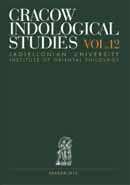The beloved and the lover – love in classical Urdu ghazal
The beloved and the lover – love in classical Urdu ghazal
Author(s): Agnieszka Kuczkiewicz-FraśSubject(s): Literary Texts
Published by: KSIĘGARNIA AKADEMICKA Sp. z o.o.
Summary/Abstract: The theme of love (išq) and the poetic genre of ghazal (gazal) have been inseparably tied to each other since the times when pre-Islamic Bedouin poets started expressing their overwhelming feelings of passion and loneliness in this intricate form. But although the literary tradition of ghazal can be traced as far back as the times of the Abbasids’ court and its most famous poet Abū Nuvās who lived and wrote his ghazals at the turn of the 8th century (d. 814), the actual blossoming of this genre in its complex and sublime form took place in medieval Persia. The great Persian poet Rūdakī (858-941) is considered to be the true originator of the ghazal in its classical shape. Among other important authors who composed Persian ghazals are Amīr Xusrau (1253-1325), Sacdī Šīrāzī (d. 1291), Jāmī (1414-1492), Urfī (1555-1590) and, above all, the greatest master of the art of ghazal, Ḥāfīz Šīrāzī (1320-1389). The Urdu ghazal has emerged from its Persian model both in structure and in texture, becoming one of the major elements of the Indo-Persian culture.
Journal: Cracow Indological Studies
- Issue Year: 2010
- Issue No: 12
- Page Range: 199-221
- Page Count: 23
- Language: English

